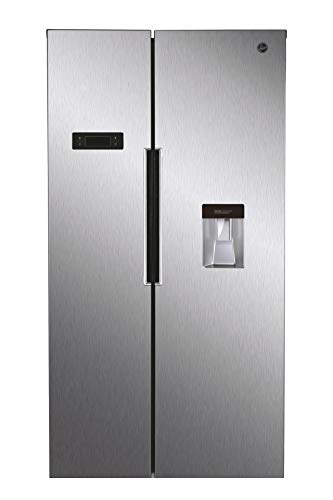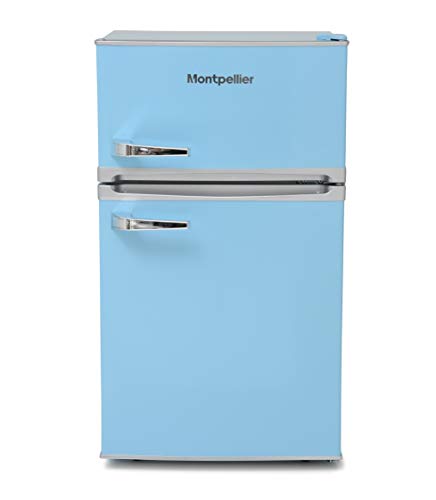Diese Unternehmen hat keine aktiven Jobs
0 Review
Rate This Company ( No reviews yet )
Information Company
- Alle Stellenanzeigen 0 Stellenanzeigen
- Kategorie Einkauf/Supply Chain
- Full Address Sentroveien 3
Etwas über Unternehmen
There’s A Good And Bad About Fridges And Freezers
Understanding Fridges and Freezers: The Essential Kitchen Appliances
Fridges and freezers are two of the most important appliances in modern-day kitchen areas. These home appliances serve a vital function in food preservation and waste reduction by making sure that perishable items remain fresh and safe for intake. This article looks into the different kinds of fridges and freezers, their functionalities, and crucial factors to consider for choice and maintenance.

Types of Refrigerators
The market uses a range of refrigerator types, each developed to satisfy various customer needs. Below is a list of the most typical kinds of fridges & freezers (testyourcharger.com):
-
Top-Freezer Refrigerators
- Most common type.
- Freezer compartment lies above the refrigerator section.
- Usually more inexpensive and energy-efficient.
-
Bottom-Freezer Refrigerators
- Freezer is situated at the bottom.
- Permits much easier access to fresh items at eye level.
- Typically includes pull-out drawers for better organization.
-
Side-by-Side Refrigerators
- Refrigerator and freezer sections are surrounding.
- Suitable for narrow kitchen areas and allows easy access to both compartments.
- Often features water and ice dispensers.
-
French Door Refrigerators
- Integrates a bottom freezer with double doors at the top.
- Offers sufficient storage and elegant styles.
- Often consists of features like temperature-controlled drawers.
-
Compact Refrigerators
- Smaller sized size perfect for minimal spaces.
- Commonly used in dorm spaces, little houses, or as secondary fridges.
Table 1: Comparison of Refrigerator Types
| Type | Advantages | Downsides | Typical Size |
|---|---|---|---|
| Top-Freezer | Budget friendly, energy-efficient | Less hassle-free access to the freezer | 14-30 cu. ft. |
| Bottom-Freezer | Simpler access to fresh food | Freezer can be more difficult to arrange | 19-30 cu. ft. |
| Side-by-Side | Easy access, water/ice dispenser | Narrow vs. storage space | 22-30 cu. ft. |
| French Door | Stylish, roomy, organized | More costly | 20-30+ cu. ft. |
| Compact | Space-saving, portable | Minimal storage | 1.7-5.5 cu. ft. |
Types of Freezers
Freezers are an equally important device for food preservation. They can be found in different designs developed to fit various family requirements. Think about the following types:
-
Upright Freezers
- Operate like a basic refrigerator with vertical storage.
- Much easier to organize with racks and compartments.
-
Chest Freezers
- Large, horizontal style usually using more storage area.
- Maintains temperature levels much better throughout power interruptions.
- More energy-efficient than upright designs.
-
Portable Freezers
- Compact systems ideal for outdoor activities or small areas.
- Typically used for camping journeys or as short-lived storage.
Table 2: Comparison of Freezer Types
| Type | Advantages | Drawbacks | Normal Size |
|---|---|---|---|
| Upright Freezer | Easier to organize | Less energy-efficient, more flooring space | 5-20 cu. ft. |
| Chest Freezer | Holds more items, energy-efficient | Harder to organize | 5-25 cu. ft. |
| Portable Freezer | Compact and flexible | Minimal storage capability | 1-10 cu. ft. |
Key Features to Consider
When selecting a fridge or freezer, consumers must keep in mind several features that can enhance performance:
- Energy Efficiency: Look for models with the ENERGY STAR accreditation to save money on electrical energy costs.
- Storage Capacity: Evaluate storage needs based upon family size and eating practices.
- Temperature level Control: Some home appliances use digital controls for accurate temperature settings.
- Adjustable Shelving: Customizable shelving enables ideal organization.
- Water and Ice Dispenser: Offers convenience however can use up valuable space inside.
- Sound Level: Sound rankings can affect convenience, particularly in open-concept homes.
Pros and Cons of Having a Fridge and Freezer
While fridges and freezers are essential technologies, they also have particular benefits and drawbacks:
| Pros | Cons |
|---|---|
| Protect food lifespan and reduce waste | Need regular maintenance |
| Enable bulk buying and meal prepping | Can be costly to purchase and run |
| Offer benefit and fast access to food | Inhabit substantial cooking area area |
Maintenance Tips
To guarantee durability and ideal performance of fridges and freezers, think about the following upkeep ideas:
- Regular Cleaning: Clean the interior and outside regularly to prevent accumulation of dirt and germs.
- Check Seals: Inspect door seals frequently for leakages to keep efficiency.
- Temperature level Settings: Keep the fridge at 34-38 ° F and the freezer at 0 ° F for optimum food conservation.
- Thaw as Needed: Chest freezers should be thawed routinely to maintain effectiveness.
- Clear Air Vents: Ensure that airflow isn’t blocked to improve energy effectiveness.
Frequently asked questions About Fridges and Freezers
Q1: How long can food be saved in a freezer?A: Most foods can be kept in a freezer for numerous months. Meats and poultry often last 4-12 months, while vegetables can last approximately 8-12 months.

Q2: How often must I clean my fridge and freezer?A: It is advisable to clean your fridge and freezer every 3 to 6 months, or as required when spills happen. Q3: Can I put hot food directly in the fridge?A: It is recommended to cool hot food to room temperature level before putting it in the fridge to avoid
raising the temperature inside the home appliance. Q4: Why is my fridge running constantly?A: This might be due to a malfunctioning thermostat, blocked coils, or door seals that aren’t working properly. Fridges and freezers are important
properties to modern-day homes, offering vital services for food storage and preservation.
Understanding the various types, functions, and upkeep requirements can help consumers select the ideal home appliances for their needs and maximize their functionality. Embracing energy-efficient models not just supports sustainable practices however likewise contributes to substantial savings on utility costs, making notified choices more important than ever.

